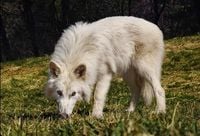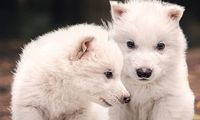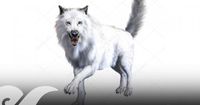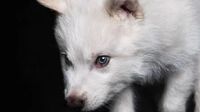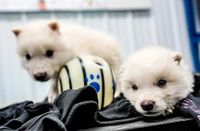Colossal Biosciences, a biotechnology company based in Dallas, has announced a groundbreaking achievement in the field of de-extinction: the birth of three dire wolves (Aenocyon dirus), a species that has been extinct for over 12,000 years. The announcement, made on April 7, 2025, has sparked both excitement and skepticism within the scientific community and beyond.
The dire wolf, known for its impressive size and powerful bite, was one of the top predators during the Pleistocene era. Its extinction, which occurred approximately between 12,000 and 13,000 years ago, is believed to have been linked to climate change and the disappearance of its primary prey, the megafauna.
Colossal Biosciences claims to have revived this ancient species through advanced genetic engineering techniques. According to a report by Time magazine, the process began with the reconstruction of the dire wolf's genome using DNA extracted from fossil remains that are between 13,000 and 72,000 years old. Scientists identified 20 key differences in 14 genes of the modern gray wolf, its closest living relative, to replicate the dire wolf's unique characteristics, such as its larger size, white fur, and robust body structure.
To bring these genes to life, the company edited gray wolf cells to match the extinct canid's genome. The modified embryos were then implanted into two domestic female dogs, which successfully gestated and gave birth to three puppies named Rómulo, Remo, and Khaleesi. These puppies are currently residing in a protected reserve in the northern United States, although the exact location has not been disclosed.
Ben Lamm, CEO of Colossal Biosciences, expressed the emotional significance of the moment, stating, "Hearing the first howl of Rómulo and Remo was like stepping back in time. It’s a sound that hadn’t been heard for millennia." The first howl, shared on social media, has been described by some as a "scientific miracle," with paleontologist Angela Ferri noting that it possesses a deeper resonance compared to that of a modern gray wolf.
Despite the excitement surrounding this achievement, it has also raised important ethical and ecological questions. Experts caution that reintroducing extinct species into current ecosystems could have unforeseen consequences. Rafael Labarca, a biologist at the Catholic University of Chile, warned, "We don’t know how they will interact with existing ecosystems or if they could become invasive species."
The scientific community is eagerly awaiting more detailed information from Colossal Biosciences, as the company has not yet published specific details of the procedure or peer-reviewed studies to substantiate its claims. This lack of transparency has led to skepticism among some scientists and conservationists who are concerned about the ethical implications of such experiments.
Colossal Biosciences, founded in 2021, has ambitious plans beyond just the dire wolf. The company aims to apply its genetic techniques to other extinct species, including the woolly mammoth and the Tasmanian tiger, and is collaborating with conservation organizations to explore how these species can be integrated into modern ecosystems.
The birth of Rómulo, Remo, and Khaleesi has reignited the debate over de-extinction and its potential applications in biodiversity conservation. While some view it as a path to restoring lost ecosystems, others raise concerns about the practicality and ethics of bringing back species that have been absent from the Earth for millennia.
As the puppies grow, they are currently being monitored closely. At just six months old, Rómulo and Remo stand about 1.20 meters tall and weigh around 36 kilos. Experts believe that as they mature, they could reach heights of up to 1.80 meters and weigh as much as 68 kilos. Their diet mimics that of their ancient ancestors, consisting of various meats such as beef, venison, and horse.
Colossal Biosciences considers this achievement as "the beginning of a new era in conservation," emphasizing that their goal is not only to resurrect extinct species but also to take responsibility for the ecological damage caused by humanity. A spokesperson for the company stated, "It’s not just about bringing back extinct species; it’s about restoring a lost link in nature."
The potential for this technology to aid in conservation efforts is significant. For instance, the techniques developed for the dire wolf could also benefit endangered species like the red wolf, which has fewer than 20 individuals left in the wild. Genetic cloning of cell lines from the red wolf is already underway, with the aim of increasing genetic diversity within the captive population by up to 25%.
As the world watches this unprecedented scientific endeavor unfold, the implications of de-extinction continue to be a topic of heated discussion. Will the return of the dire wolf pave the way for a new approach to conservation, or will it raise more questions than answers about the role of humanity in nature? Only time will tell as the story of Rómulo, Remo, and Khaleesi develops.

